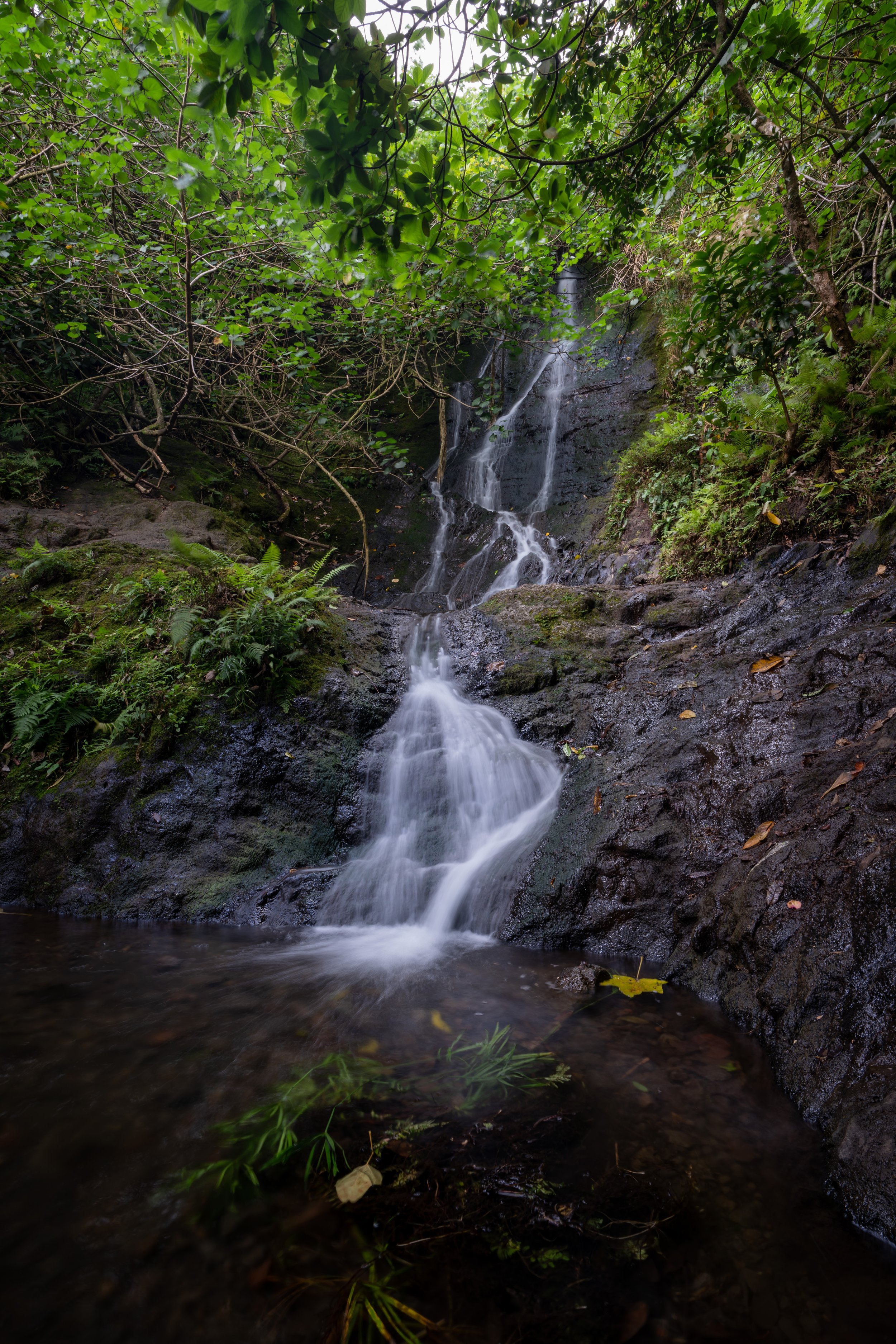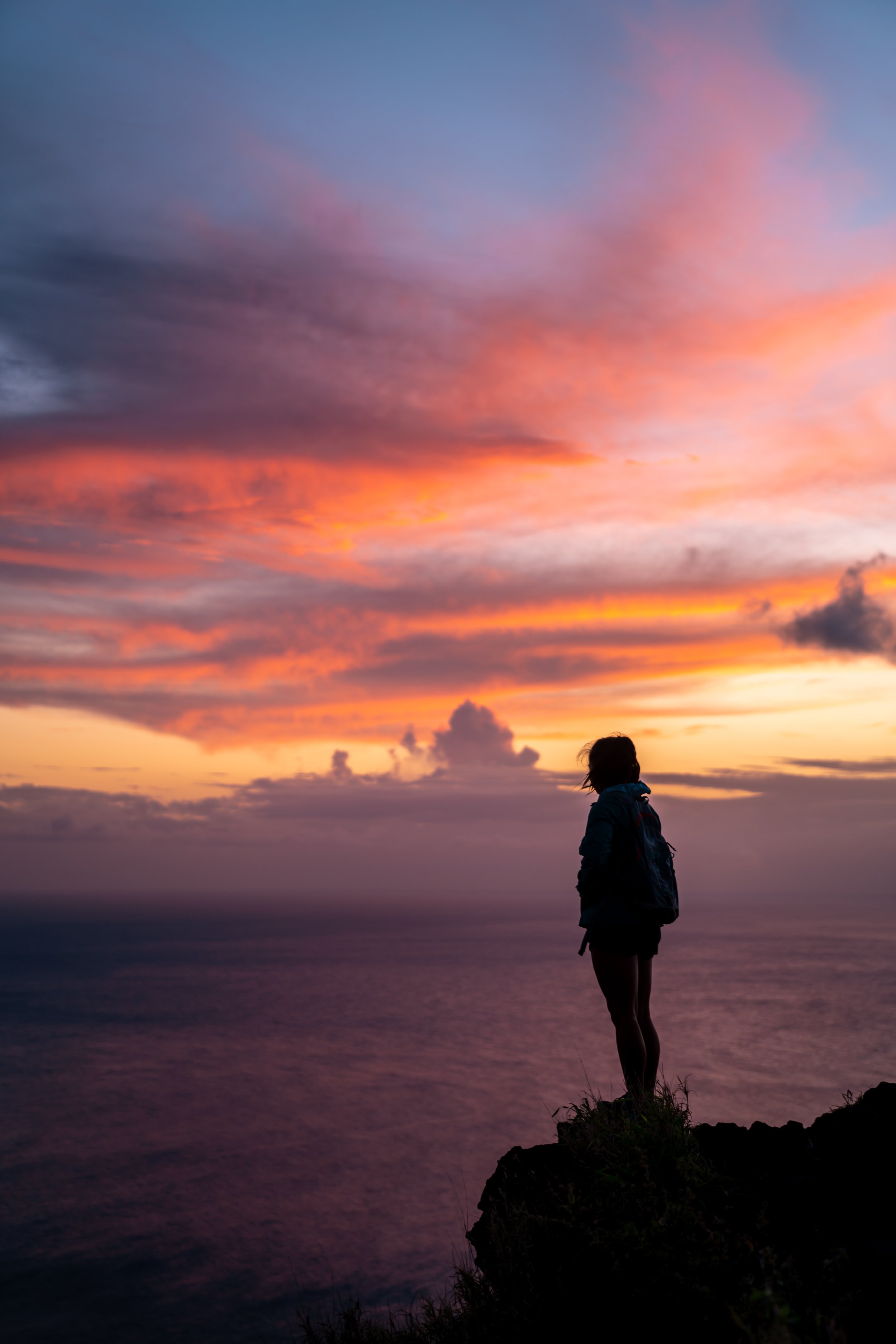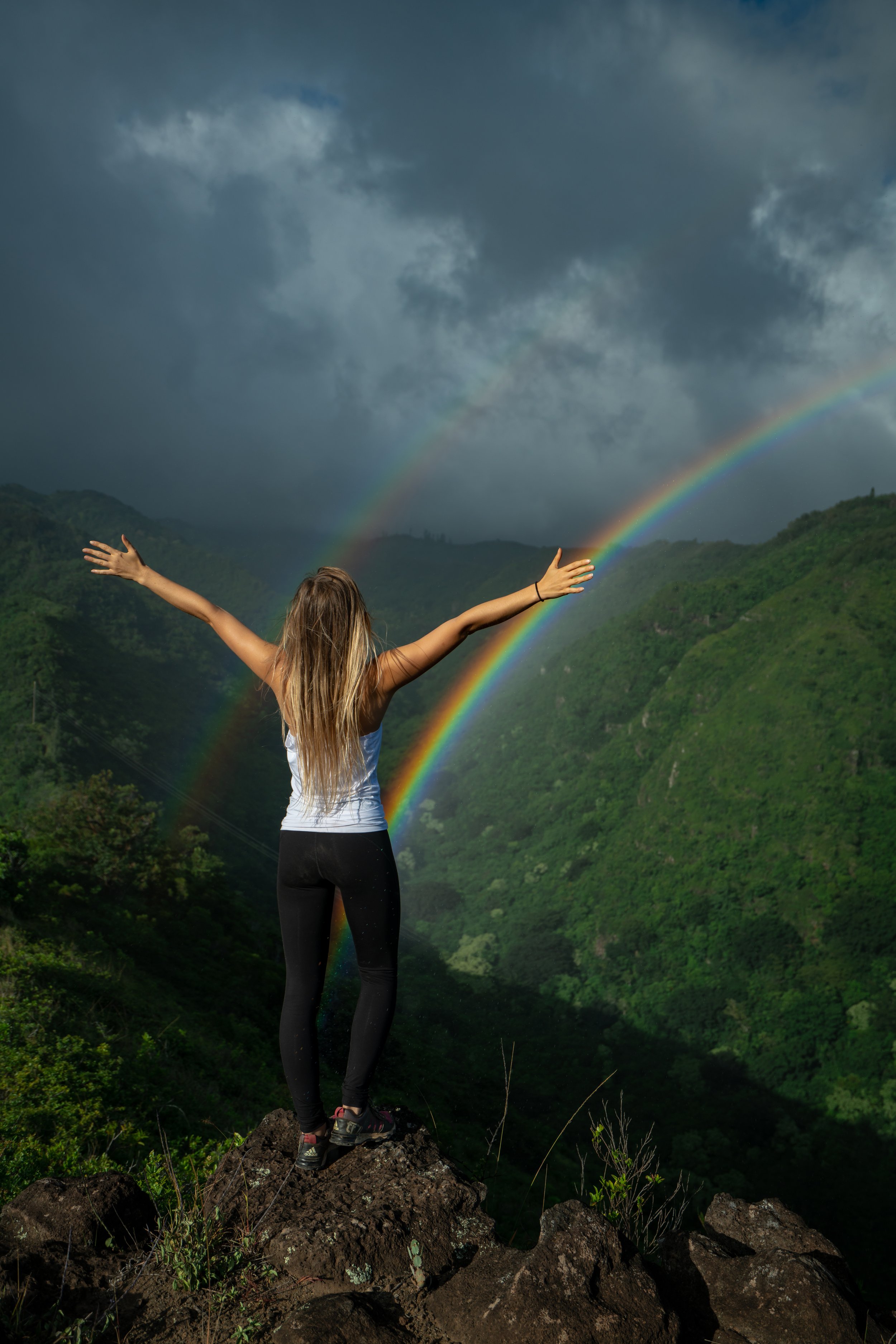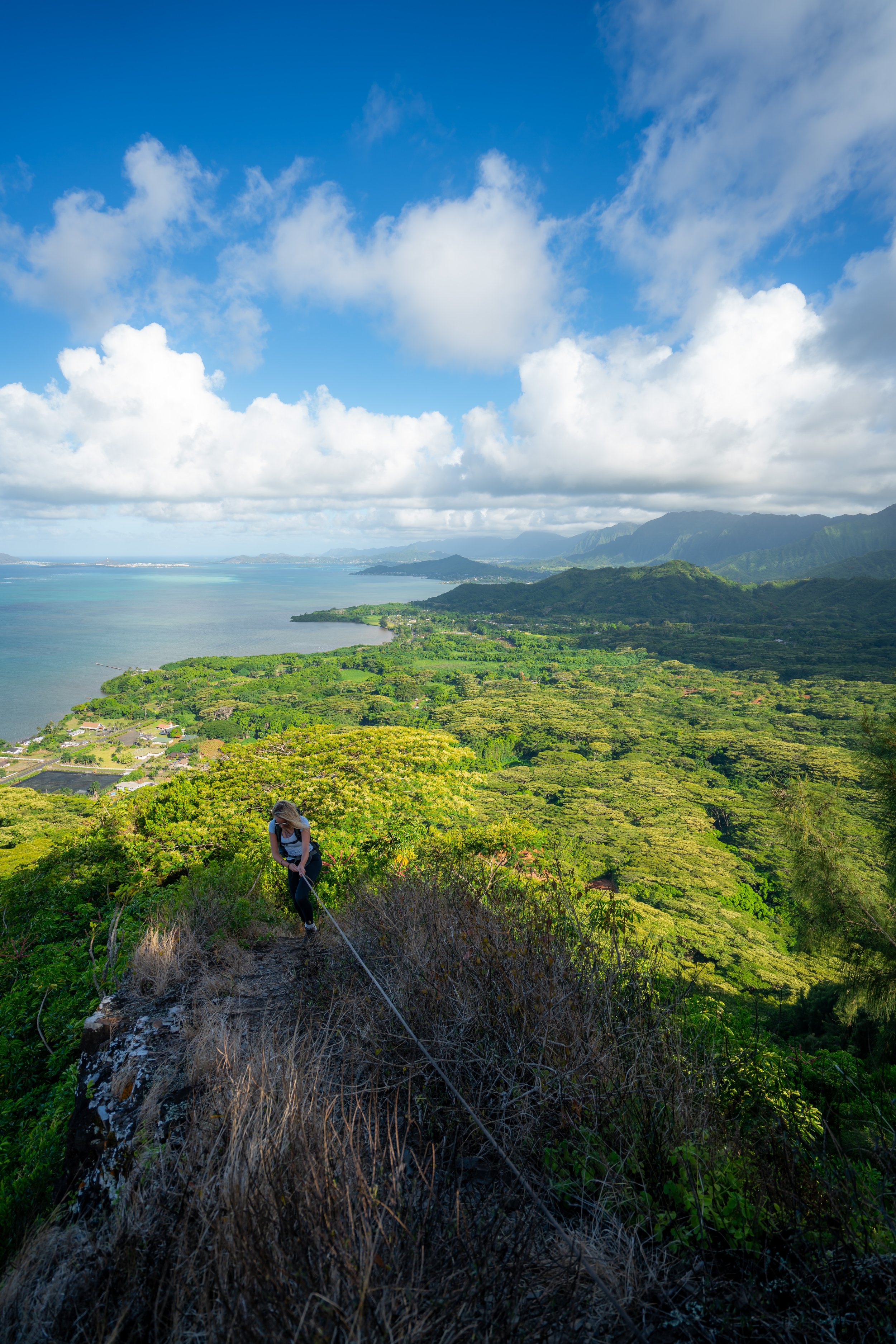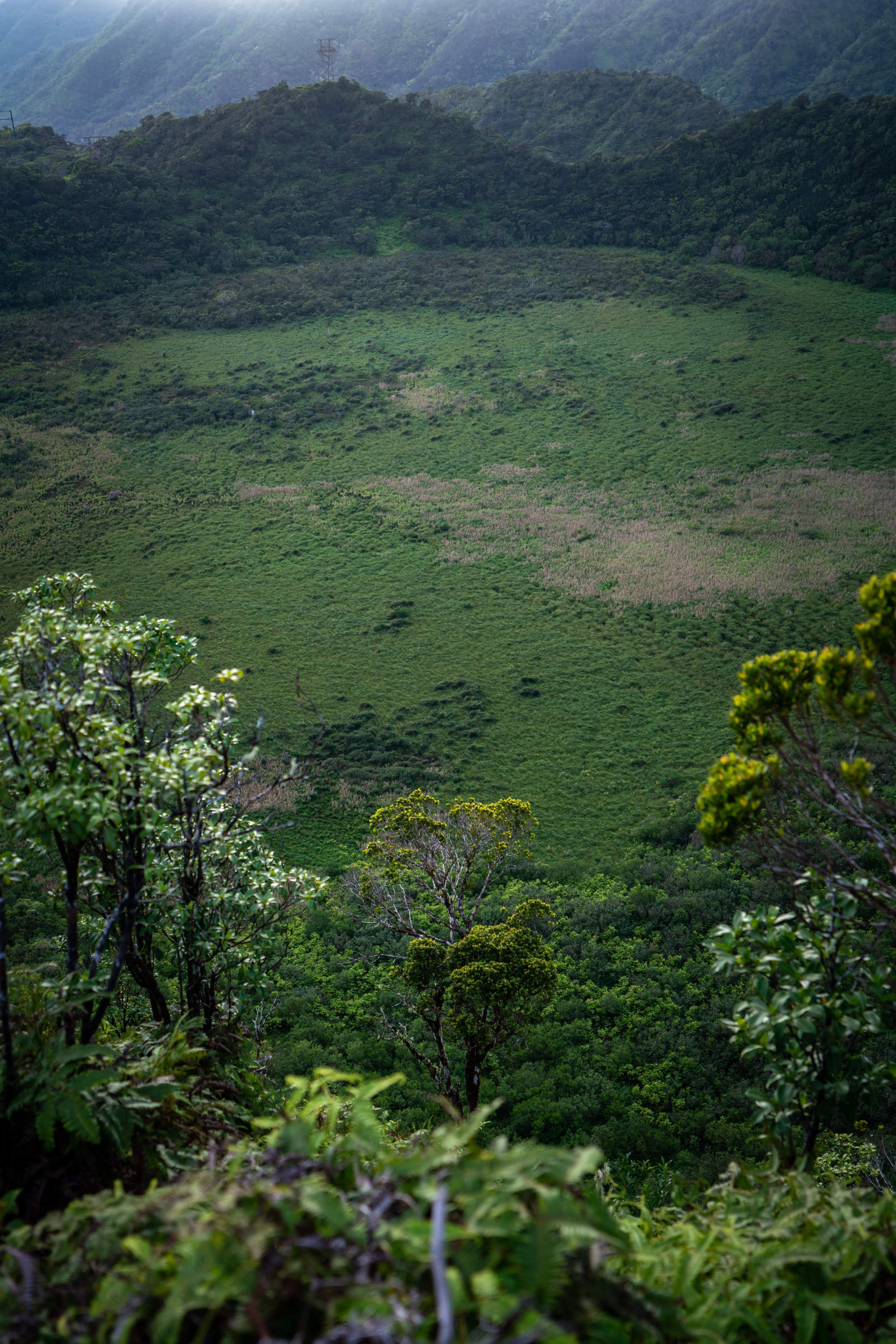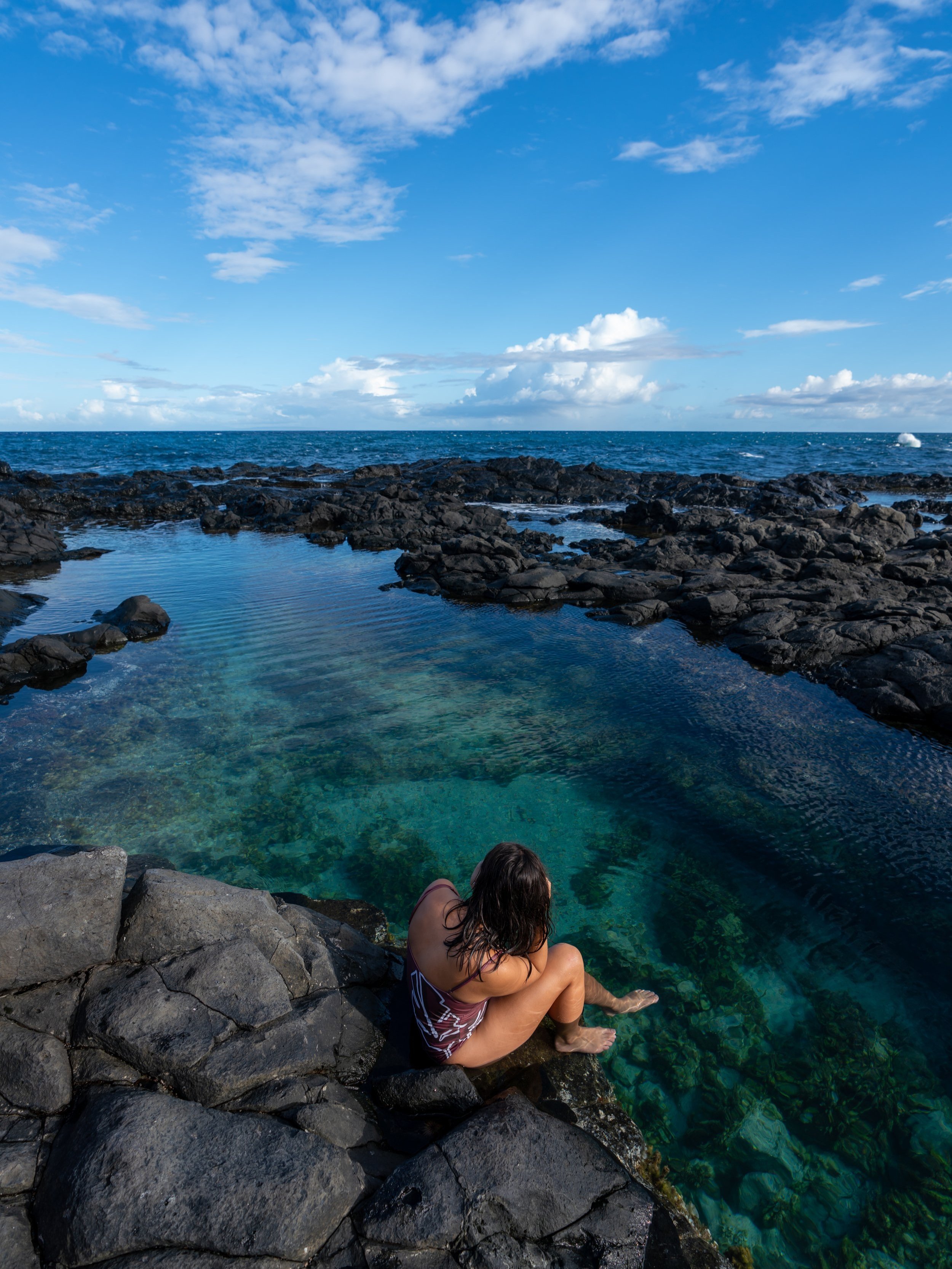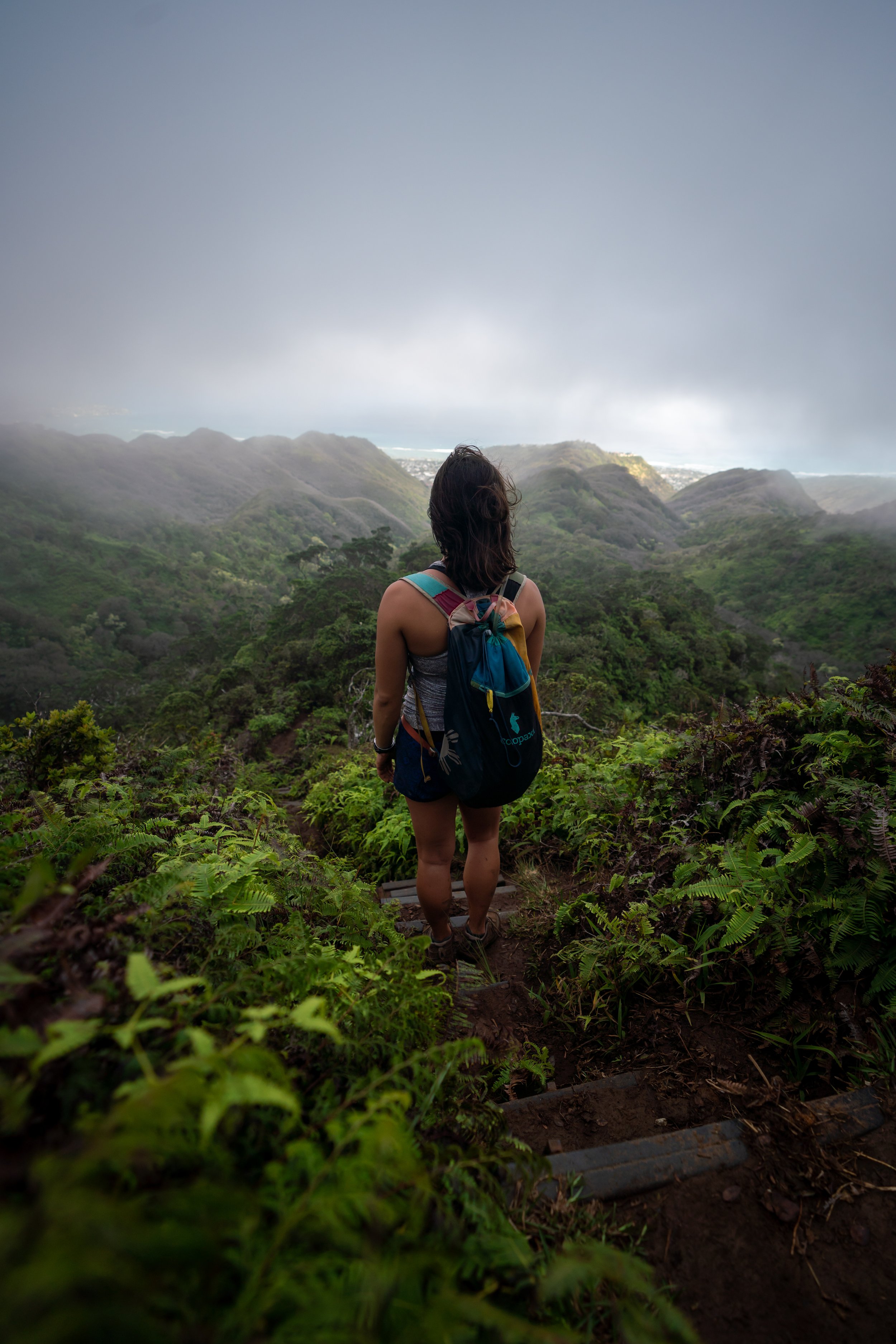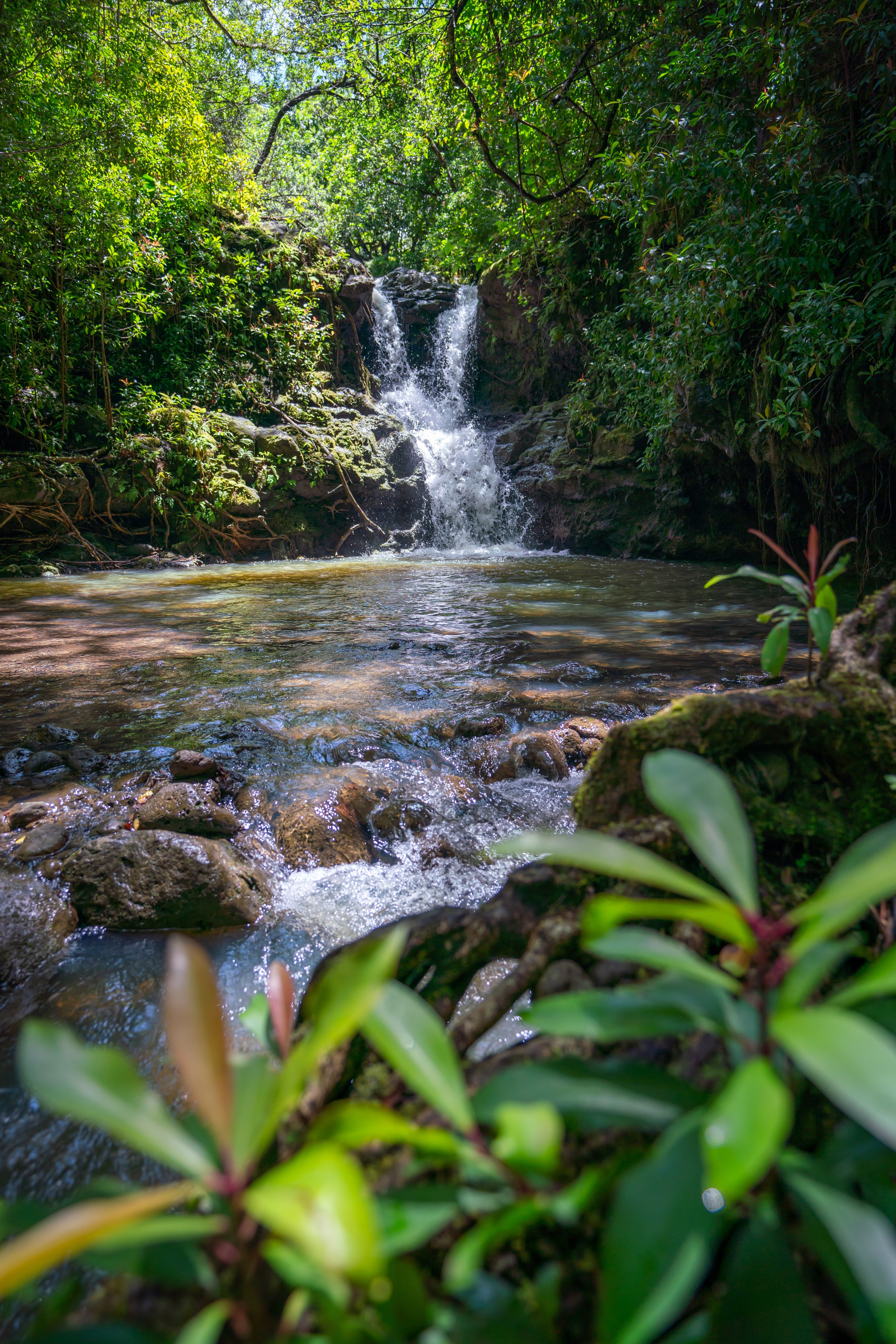Hiking the Puʻu Māʻeliʻeli Trail (Digging Hill Pillbox) on Oʻahu, Hawaiʻi
Distance: 2.2 miles / 3.5 km
The Puʻu Māʻeliʻeli Trail, also known as the Digging Hill Pillbox Trail, is a little lesser-known Oʻahu secret on the east side of the island.
I say this because other, more popular east Oʻahu trails, such as Crouching Lion and the Lanikai Pillbox Trail, tend to overshadow Pu’u Māʻeliʻeli—a trail I see as a beautiful local hidden gem!
That being said, the Puʻu Māʻeliʻeli Trail to the pillbox at the top is a favorite among locals, especially when it comes to hiking the trail for sunrise. Therefore, I ask that you please do what you can to minimize your impact and not draw negative attention to this fun, little-known Oʻahu adventure!
Puʻu Māʻeliʻeli Trailhead Parking
Parking for the Digging Hill Trail is located on East Hui ʻIwa Street, as close to the McDonalds as you can find parking.
On a different note, please be quiet if you plan to hike the Puʻu Māʻeliʻeli Trail for sunrise, as this local trail begins adjacent to a residential area and does not need negative attention drawn toward the hiking community.
Google Maps Directions: Puʻu Māʻeliʻeli Trailhead
Walking to the Trailhead
From the parking area on East Hui ʻIwa Street, the Puʻu Māʻeliʻeli Trail begins off Kahekili Highway in the eastbound direction.
I always find it safest to walk the short 0.1-mile (0.2 km) stretch along Kahekili Highway on the inside of the guardrail.
Hiking the Puʻu Māʻeliʻeli Trail
This is the true Puʻu Māʻeliʻeli Trailhead, which begins on the left-hand side, immediately following the residential community.
Google Maps Directions: Puʻu Māʻeliʻeli Trailhead
After the highway, the Puʻu Māʻeliʻeli Trail begins climbing uphill, gaining roughly 550 ft. (168 m) from the trailhead to the summit.
This hill is the first of three notable hills on the Puʻu Māʻeliʻeli Trail, but it is, without a doubt, the longest and hardest hill on the hike to the top—especially if it has rained recently!
With that in mind, this very muddy and slippery hill will likely get whatever you’re wearing dirty unless you happen to get lucky with a bright, dry, and sunny day like this!
Some hikers may prefer to carry trekking poles for this long, slippery section of the trail, which only seems to get worse as more traffic frequents the Puʻu Māʻeliʻeli Pillbox.
After the first hill, the Puʻu Māʻeliʻeli Trail levels off significantly, traversing a number of less steep rolling hills before reaching the final two steep hills closer to the summit.
At this split, go left to stay on the Puʻu Māʻeliʻeli Trail.
This is where the trail to right meets back up with the true Puʻu Māʻeliʻeli Trail, which is typically only use by hikers who went the wrong way at the split above.
Within the first half of the hike, the summit of Puʻu Māʻeliʻeli becomes visible from the trail, which is one of the only times it can be seen, as the majority of the hike passes through a fairly dense Strawberry Guava-Koa Haole-Ironwood canopy.
These Palaʻā ferns are among the very few native species that can be seen along the Puʻu Māʻeliʻeli Trail, which hopefully helps illustrate how invaded much of Hawaiʻi’s low-lying forests are!
Yes, essentially everything you’re looking at in these photos, including these Agave plants, are not supposed to be in Hawaiʻi.
At a few different points along the Puʻu Māʻeliʻeli Trail, Noni can be seen growing, which is a canoe plant—meaning it was brought to Hawaiʻi by the original Polynesians with the intent of cultivating familiar crops when they discovered a new island.
Through these middle sections of the hike, the Puʻu Māʻeliʻeli Trail continues climbing, but these areas are not nearly as steep as the hills at the beginning and end of the hike.
Puʻu Māʻeliʻeli-Hui ʻIwa Junction
At roughly 0.8 miles (1.3 km), the Puʻu Māʻeliʻeli Trail splits, with an alternative route that leads down to the neighborhoods near the beginning.
However, if you’re visiting Oʻahu, I don’t recommend following these side trails, as they lead to areas of private property at the bottom.
This is the bottom of the second of the three steep hills on the Puʻu Māʻeliʻeli Trail, with the final hill located a short distance from the top of this one.
At the top of the second hill, the trail levels out for about 0.1 miles (0.2 km) before reaching the third hill shortly ahead.
Be careful not to hit your head on all these low-hanging Christmas Berry trees.
This is the base of the third and final significant hill, which leads to the summit of Puʻu Māʻeliʻeli.
About halfway up the hill, this view opens up to the east, revealing notable summits such as Puʻu Kōnāhuanui, along with Tripler and the Stairway to Heaven (Haʻikū Stairs) on a clear day!
If you’re hiking up in the dark for sunrise, watch out for this post in the middle of the trail.
That said, I highly recommend packing a good headlamp, as it can be useful on Puʻu Māʻeliʻeli, along with countless other sunrise and sunset adventures, such as the Koko Crater Arch and the ʻEhukai Pillbox Trail.
Puʻu Māʻeliʻeli
After about 1.0 miles (1.6 km) from the trailhead, not including the walk along the highway, the Puʻu Māʻeliʻeli Trail reaches the summit, with the two main pillboxes located a short distance ahead.
Watch out for this hole in the ground, which is the first pillbox immediately following the summit sign.
Puʻu Māʻeliʻeli Pillbox
From the Puʻu Māʻeliʻeli Pillbox, places can be seen as far away as Kualoa Ranch and Mokoliʻi to the north, as well as Mt. Olomana and the Kalāheo Hills to the south.
In my experience, the Puʻu Māʻeliʻeli Pillbox can be one of the least crowded Oʻahu sunrise hikes, which is something that cannot be said about similar east Oʻahu adventures, like the Lanikai Pillboxes or the Crouching Lion Trail.
This is all to say that there’s always a great chance of hiking the Puʻu Māʻeliʻeli Pillbox Trail and having the summit entirely to yourself—especially on a weekday at sunrise!
Native Plants on the Puʻu Māʻeliʻeli Trail
Generally speaking, I can come up with a long list of native plants on most trails around Hawaiʻi, but since Puʻu Māʻeliʻeli is so low in elevation and close to urban areas, 99% of the trail is covered in non-native, invasive species like Shoebutton, Brazilian Pepper, and Juniper Berry.
That being said, the few native plants that I’ve noticed on the trail include Uluhe, Palaʻā, ʻUhaloa, and a rare ʻŌhiʻa lehua—if you know where to look.
If you would like to learn more about these and many other native Hawaiian plants from across the islands, I encourage you to check out my separate post linked below.
Read My Separate Post: Native Hawaiian Plant Guide




